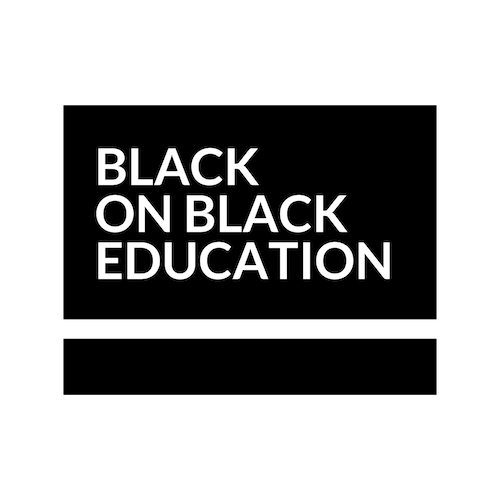Empowering Student Voice: Why it Matters and How to Foster it in the Classroom
Welcome to the "Back to Basics: Empowering Student Voice Edition" series on the Shhh It Time to Listen blog! Over the next eight weeks, we will explore the vital role of student voice in education and discover practical strategies to foster it within the classroom. In this first blog post, we will delve into the significance of empowering student voice and why it matters for educational success.
Since the start of this blog series, I have been writing randomly about the educational topic I am most passionate about but realized I never broke it down from start to finish. Back to Basics will be like a summer PD that will take you about 5 mins to read but will have an exponential impact on your school's classrooms next year.
Why Does Student Voice Matter?
Student voice refers to the unique perspectives, ideas, and concerns that students bring to the learning environment. It is crucial to understand that students are not merely passive recipients of knowledge; they are active contributors to the learning process. By empowering student voice, we provide students with the opportunity to express their thoughts, share their experiences, and engage meaningfully in their education. Here's why it matters:
1. Enhanced Engagement: Schools are constantly looking for tips, tricks, and methods to engage young people, but fail to realize they are looking in the wrong place. When students feel their voices are valued, they become more engaged in their learning. By incorporating their interests and opinions, educators create a sense of ownership, leading to increased motivation and active participation.
2. Authentic Learning: Our education system is built on rote memorization; preparing students for jobs that soon won't exist. Our society requires that young people become critical thinkers and problem solvers. Young people already know this which is why they are rejecting the teaching style that sees the teacher as the giver of knowledge and the student as the receiver. They are instead craving a teaching style that centers their voice and encourages authentic content in real-world contexts. Students are then learning to apply their knowledge and skills to address real problems, promoting the critical thinking and problem-solving abilities they so desperately need.
3. Diverse Perspectives: Educators can never and will never know it all but when they relinquish power in the classroom they give students the ability to bring their unique set of experiences, cultural backgrounds, and viewpoints to the classroom. Empowering student voice ensures that all perspectives are heard and respected, fostering inclusivity and a richer learning environment.
4. Empowerment and Agency: As educators, it is our duty to empower our students and arm them with the tools they need to be active drivers of their own lives. When students have a voice in decision-making processes, they develop that sense of empowerment and agency, which helps cultivate their confidence, self-advocacy skills, and prepares them for active citizenship in the future.
Strategies to Foster Student Voice:
Now that we understand the importance of empowering student voice, let's explore some practical strategies to foster it within the classroom. It's not enough to understand its importance, it is necessary to know the real ways to use student voice:
1. Establish a Positive Classroom Culture: Create a safe and inclusive environment where all students feel comfortable expressing their opinions without fear of judgment or ridicule. Encourage respect and active listening among students. Start by asking students what this looks like for them!
2. Embrace Student Choice: Provide opportunities for students to make decisions about their learning. Allow them to choose topics, projects, or approaches that align with their interests, strengths, and learning styles. Surveys, class discussions, academic restorative circles, or a letter to education activity to better understand how your young people learn best.
3. Actively Seek Input: Regularly seek student input on classroom activities, instructional methods, and assessment formats. The opportunity to get feedback should be a consistent part of your curriculum. At the end of every lesson, project, unit, or semester there should be planned time and attention placed on collecting student feedback. Time also must be spent on analyzing and implementing that feedback.
4. Incorporate Collaborative Learning: Encourage collaborative activities that promote discussion, debate, and teamwork. This allows students to learn from and with each other, fostering a sense of collective responsibility and shared knowledge creation.
5. Amplify Student Voice Beyond the Classroom: Education does not happen in a vacuum. It is necessary for educators to encourage students to share their perspectives and ideas with a broader audience. Provide platforms for them to showcase their work, such as class presentations, exhibitions, or online platforms. Create learning opportunities that allow students to show off their learning or impact people in their communities.
6. Practice Reflective Listening: Develop active listening skills as an educator. Reflective listening involves paraphrasing and summarizing students' thoughts, demonstrating that their voices are heard and valued. The only way to make any of the above strategies work, there must be a commitment to truly listening and learning from what young people have to say.
Empowering student voice is an essential element of student-centered practices in education. By valuing and fostering student voices, we create a learning environment that promotes engagement, authenticity, inclusivity, and empowerment.
In the upcoming weeks, we will explore more strategies and delve deeper into the various aspects of centering student voices and implementing student-centered practices.
Stay tuned for our next blog post in the series, where we will focus on Building Authentic Relationships with Students.

